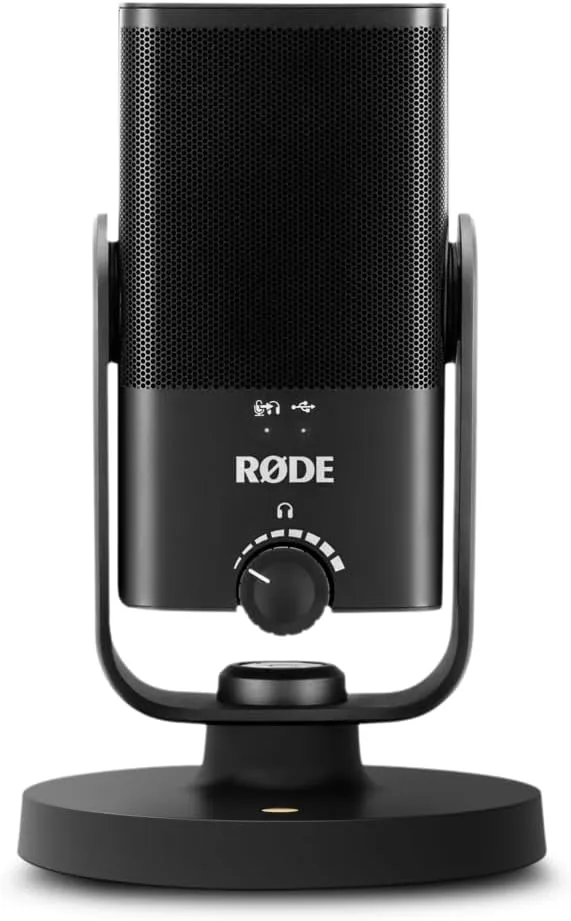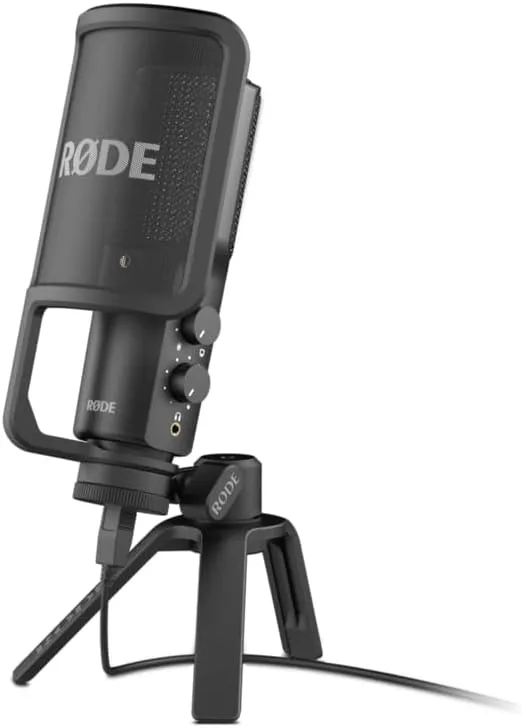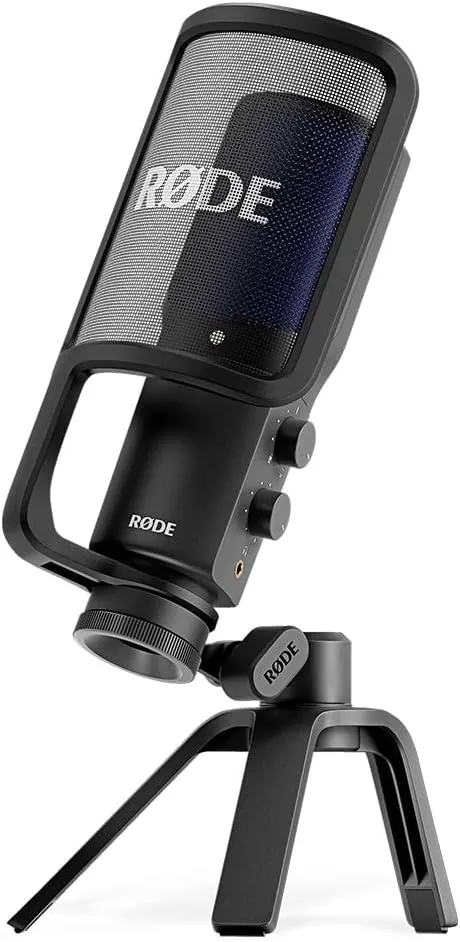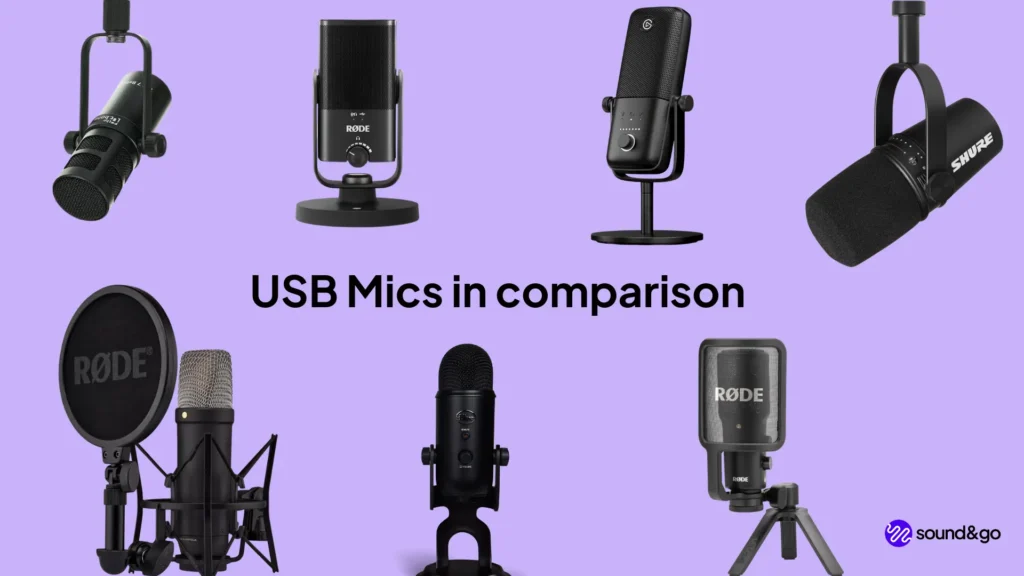Rode NT-USB Review - All microphone variants in comparison - Røde NT USB test report
The Røde NT-USB* was the first really good and popular USB microphone. We took a look at the entire model range.
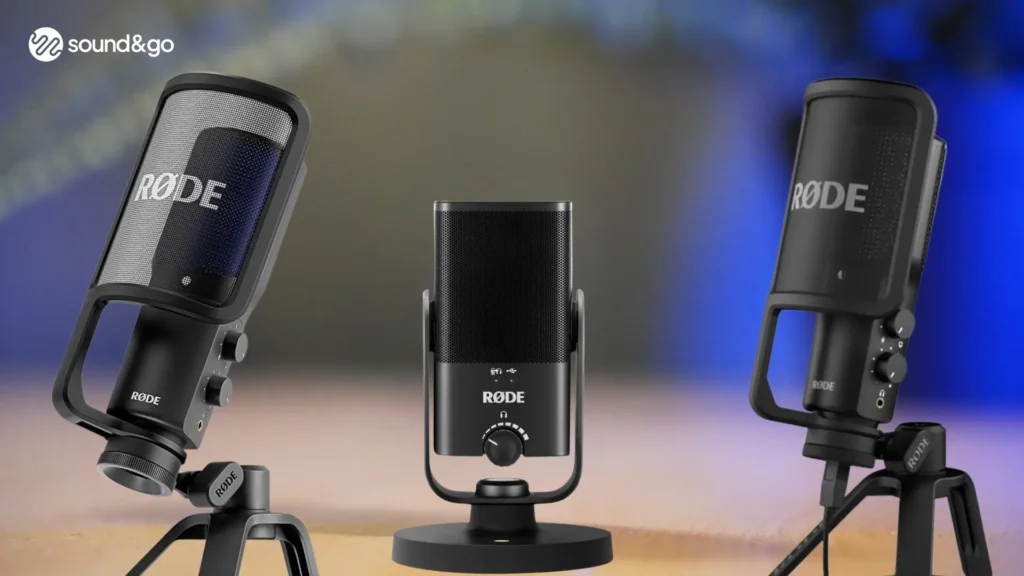
Comparison of the variants:
Røde NT USB Mini
- Connector: USB-C
- Released: 2020
- Smartphone compatible: Yes, with suitable adapter
- Audio Effects: Yes
- 16bit 48kHz
- Poorest in sound comparison
Røde NT USB
- Connector: USB-A
- Released: 2014
- Smartphone compatible: No
- Audio Effects: No
- 16bit 48kHz
- Oldest, no longer in production
- Bargains possible at retailers. e.g. Amazon only available second-hand
Røde NT USB + (our favorite)
- Connector: USB-C
- Released: 2022
- Smartphone compatible: Yes
- Audio Effects: Yes
- 32bit 48kHz
- Revolution preamp and lowest self-noise
- Use our affiliate links and support our work.
Our website is free of advertising banners and we state transparently when we have been sent a product. By purchasing from our affiliate partners you do not pay more and support us. Thank you!
Differences between Røde NT USB, NT-USB Plus and NT-USB Mini - Which model should I buy?
The main difference between the models is the date of release. As listed in the table below, the NT-USB is already somewhat outdated and is no longer produced by Røde. Nevertheless, there are many suppliers who continue to sell the Rode Micro. You can then get a supposed “bargain”, but you should be aware that the RRP is from 2014. The cables are also outdated and the model has the worst connectivity. In addition, the microphone only records in 16 bit and 48 kHz.
The NT USB + is the successor model, which is why we find the model name somewhat misleading; a name such as “NT USB 2nd Gen” or similar would be more appropriate. Røde thought: “Never change a running system” and took the NT USB, which is extremely popular with podcasters, and only put in new technology. The buttons have been slightly improved, as has the blue light that indicates that the microphone is connected. The preamps have been improved and have very low self-noise. Self-noise has long been the problem why USB microphones were generally discouraged. The High Gain Revolution PreAmp and the audio interface, which records in 24 bit and 48k Hz, give the microphone a higher quality sound. In addition, the DSP (Digital Signal Processing) settings allow you to adjust the sound of the microphone using software. We have described how this works in the Rode PodMic USB test.
Rode NT-USB models: First impression and scope of delivery
The Rode NT USB models immediately make a high-quality impression. The housings of the microphones are all made of metal, only the table stands of the NT USB and NT USB + are made of plastic. You get USB cables that are long enough (3 meters) and even 6 meters long for the NT USB. As the table stand and pop protection (integrated in the housing of the Mini) are integrated in all microphones, you don’t need to buy anything in addition to the microphone. Once connected, you can start voice recordings directly in any software, as the microphones are recognized directly via Plug and Play on both Mac and Windows.
As listed below, the scope of delivery consists of the microphone itself, a pop screen (except for the Mini), the stand and a USB cable. The old NT-USB also came with a microphone bag with stickers, but unfortunately this is no longer included. We thought this was a nice “thank you” from Røde.
Another difference is that the Mini only has a control for the headphone volume, the larger models also have a control for the microphone volume for level adjustment.
Simple test report - good connectivity, good sound, a clear favorite
It didn’t take much patience or research to write a test report for these models, as all models worked straight away without any problems. The only thing we noticed is that the mini model is only compatible with a specific smartphone adapter. Despite the USB-C socket on the device, you need a cable from USB-C to USB-A, which is then compatible with smartphones using a USB-A (female!) to Lightning or USB-C adapter. Connectivity is definitely easier with the latest model, our favorite, the NT-USB +.
The Mini also has a disadvantage in terms of sound. The built-in pop protection doesn’t work so well, and you can also hear in the video that the microphone sometimes overdrives with loud plosives (P and B sounds).
The microphone for podcasters, streamers and voice recordings
The cardioid polar pattern makes these microphones ideal for podcasts, which is why we have included them in our podcast microphone comparison. All three models are cardioid condenser microphones and are therefore perfect for voice recordings. The table stand provides you with a functioning setup. For some people, a microphone boom, such as the PSA1 or the PSA1+ from rode microphones, is an interesting option as it allows the microphone to be aligned even better. A microphone boom is particularly useful for streams where you like to move around a bit, or if you want to make use of the proximity effect.
USB microphone with connection for headphones
Another important factor is that the microphones have a connection for headphones. This allows you to hear your own voice directly without latency and assess what the sound is like. Very practical for streamers and gamers. The connectivity of the microphones is good, especially the newer Mini and Plus models shine with their integration with Rode Connect and all the associated effects. Because here you can still influence the sound of the microphones. From user-friendly Big Bottom buttons to exciters and compressors, you can actually adjust everything here to further increase the sound quality. However, the Mini model reaches its limits more quickly than the Plus model.
Rode NT USB Review - Conclusion on the Rode NT-USB lineup
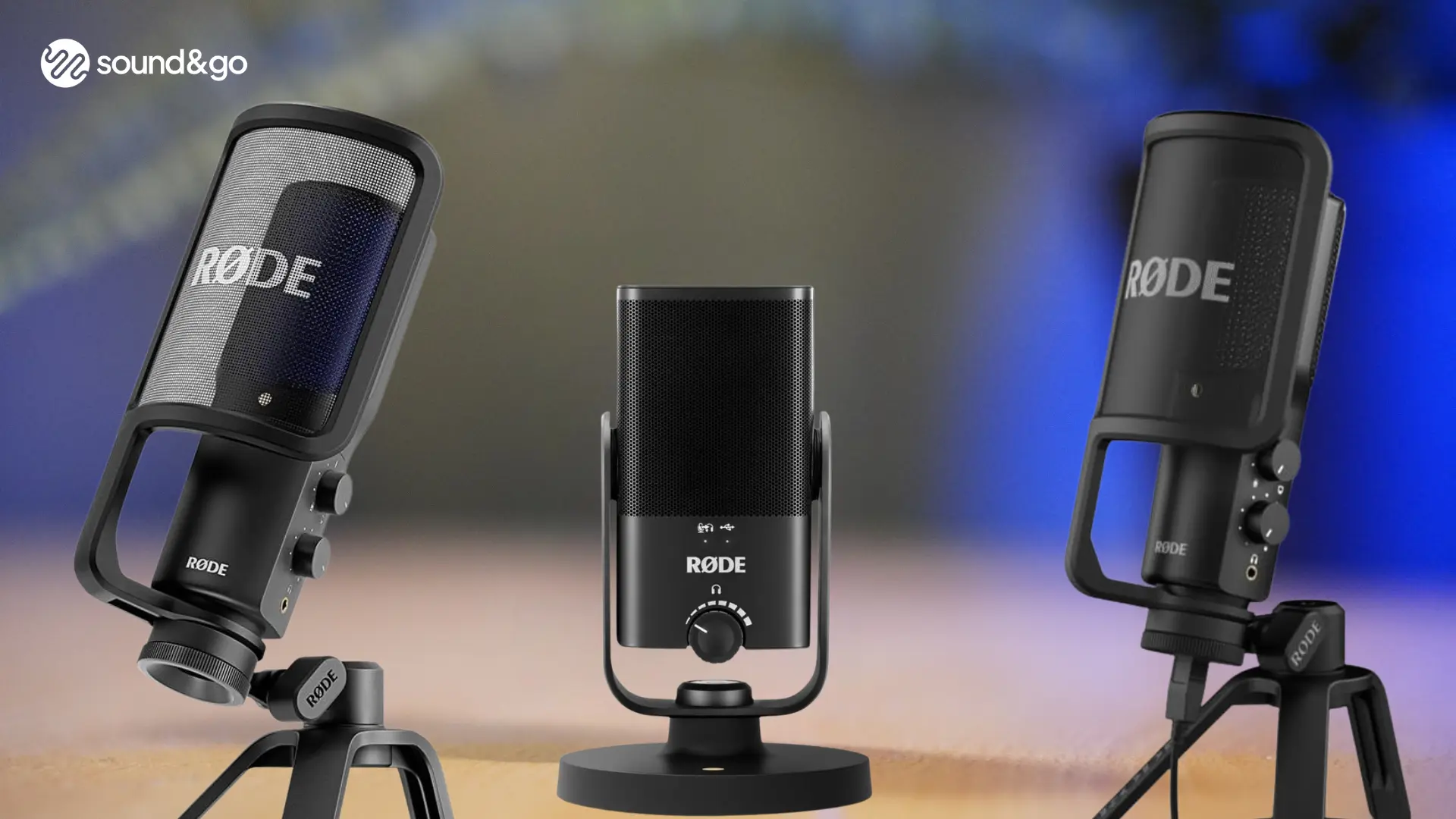
The NT-USB series is quite rightly the most popular microphone for gaming, streaming and podcasting. It has everything you need: headphone output, supplied stands, pop protection and long USB cables. Setting up the microphone is really effortless, regardless of the model. In addition to the volume control for the headphones, the larger models have a rotary control for adjusting the microphone. So you can record your first podcast straight away.
Our favorite is definitely the NT USB +, as it scores with connectivity and is overall the best condenser microphone in this price segment. In second place is the Mini, as it still has some good features, but you should definitely keep a good distance from the microphone, i.e. not too close (risk of plosive sounds) and not too far away (risk of too much reverberation). The large models are recommended, especially if you take into account that they come with a good pop shield and an acceptable table stand. The normal model is already somewhat outdated and is therefore often offered on sale.
Links marked with * are affiliate links. There are no additional costs for you, some of these links have an automatic discount for you. We mark these links for transparency and would never recommend bad products!
Links marked with * are affiliate links. There are no additional costs for you, some of these links are with an automatic discount for you. We mark these links for transparency and would never recommend bad products. Find out more here: Our partners.

